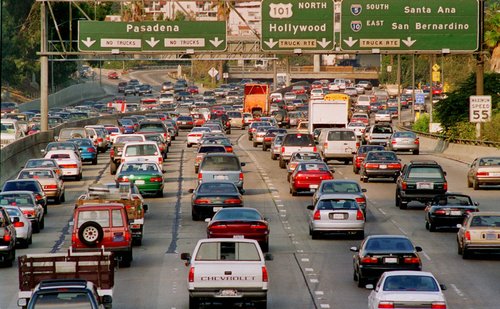Washington D.C. Tackles Carbon Emissions
Rising sea levels, flooding, increased urban heat effect,
changes in weather patterns, and reliability of energy supply are just a few of
the challenges that Washington D.C. (the District) may face in the near future.
With this recognition comes the awareness that cities play a critical role in
reducing greenhouse gas emissions and mitigating the potential impacts of
climate change through actions taken to reduce emissions from government
operations and from the community as a whole. The District’s GHG inventory
represents a critical first step towards the development of a Climate Action
Plan. In 2007 DC Mayor Adrian Fenty
signed the Mayor’s Climate Protection Agreement. This agreement is an
initiative by the U.S. Council of Mayors to meet the goals of the Kyoto
Protocol at a local level.
Compared to other cities, the District’s per capita emissions are relatively high. A leading driver of these high emissions is the fact that the District’s daytime population swells by 400,000 workers each working day. This represents the largest percentage increase in daytime population of any large city in the nation.
In 2006, the District emitted 10.2 million tons of carbon dioxide equivalents (CO2e), a measure of the six primary global-warming pollutants. In 2011, the District emitted 8.9 million tons of CO2e, a reduction of 12.5 percent from the 2006 baseline year. Citywide emissions per capita dropped from 18 tons/person of CO2e in the 2006 inventory to 14.5 tons/person in 2011.
Of all contributing sectors to the District’s emissions, buildings contribute 74% overall with non-residential buildings coming in at 51% of the District’s emissions, residential buildings at 14%, and Federal buildings at 9%. In comparison the next biggest sector is vehicles at 22%. However, this does offer opportunities to improve within the buildings sector by improving density of development, mass transit options, and developing more walkable neighborhoods.
The District has in place a number of progressive policies and programs that are reducing energy use and promoting renewable energy and alternative transportation, lowering emissions of greenhouse gases. These policies have already elevated the District to the top of many measures of urban sustainability. The Green Building Act, Clean and Affordable Energy Act, and 2008 Construction Codes set the stage for greening the District’s buildings.
The use of Green roofs helps to keep buildings cool, improve air quality, and reduce greenhouse gas emissions, and ultimately saving energy. The District has one of the most aggressive green roof programs in the country. Both public and private buildings have over 800,000 square feet of green roofs (second in the nation behind Chicago).
The federal Environmental Protection Agency (EPA) recently recognized the District as a national leader (third among cities nationwide) in purchasing renewable power. The city’s renewable portfolio standard, which will require electric power sold into the city to be 20% renewable by 2020. The renewable energy incentive program is funding more than 200 residential and business photovoltaic installations each year.
References:

No comments:
Post a Comment
Note: Only a member of this blog may post a comment.